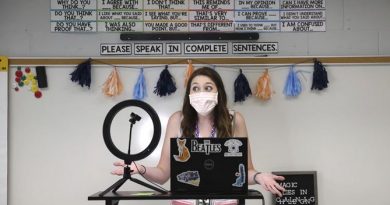Student Device Monitoring a Threat to LGBTQI+ Students, Student Expression —Report
Student device monitoring disproportionately affects kids who cannot afford their own devices and, according to a new report, poses threats to student privacy (such as LGBTQI+ students who might be “outed”) and creates a significant chilling effect on student expression.
According to information from a pair of new reports released today from the Center for Democracy & Technology, 81% of teachers reported the use of online monitoring software that can track students during and outside of school hours/activities. Further, some “71% of teachers report the use of monitoring software on school-issued devices, only 16% of teachers report its use on privately owned personal devices, suggesting that students in higher-poverty districts are subjected to more monitoring than those in wealthier districts as many do not have their own personal devices.”
The use of monitoring software is having an effect, according to one report, Student Activity Monitoring Software: Research Insights and Recommendations.
- A majority of parents (61%) and teachers (57%) said they “could bring long-term harm to students if it is used to discipline them or is shared and used out of context.”
- A majority of students (60%) said they do not share their true thoughts/ideas online “because they know they are being monitored.”
- A majority of parents (51%) and a large minority of teachers (47%) said online monitoring tools could have unintended consequences like “outing” LGBTQI+ students.
- A large minority of parents (49%) and teachers (40%) said online activity monitoring violates students’ privacy rights.
- Nevertheless, a majority of parents (62%) and teachers (66%) said the benefit of online monitoring outweigh the privacy concerns.
According to one of the reports: “While a potential goal of student activity monitoring software is to prohibit access to obscene materials, these findings raise questions about whether tracking students may cause them to hesitate before accessing important resources (related to mental health, for instance).”
In the other report, Online and Observed: Student Privacy Implications of School-Issued Devices and Student Activity Monitoring Software, researchers found that one of the key driving factors for the use of online monitoring software was “to satisfy perceived legal and funding requirements. A common belief among district participants was that student activity monitoring software was required for compliance with the Children’s Internet Protection Act (CIPA) and the Family Educational Rights and Privacy Act (FERPA), and for accessing funding through the E-Rate program. LEAs were explicit, saying, ‘our approach was [that] we needed a lot of granular control so that we would comply with CIPA.'”
As a result of the findings, a number of organizations, including the State Educational Technology Directors Association (SETDA), as well as civil rights organizations, including the Hispanic Technology & Telecommunications Partnership, InnovateEDU, the Center for Learner Equity, Getting Smart, the American Civil Liberties Union and the Center for Democracy & Technology signed a letter urging Congress “to protect student privacy, expression, and safety by updating the Children’s Internet Protection Act (CIPA or the Act) to clarify that CIPA does not require broad, invasive, and constant surveillance of students’ lives online, or by asking the Federal Communications Commission (FCC) to clarify the Act.”
Both reports, Student Activity Monitoring Software: Research Insights and Recommendations and Online and Observed: Student Privacy Implications of School-Issued Devices and Student Activity Monitoring Software and the letter to Congress are freely accessible online.
Source: https://thejournal.com/articles/2021/09/21/student-device-monitoring-a-threat-to-lgbtqi-students-student-expression-report.aspx




